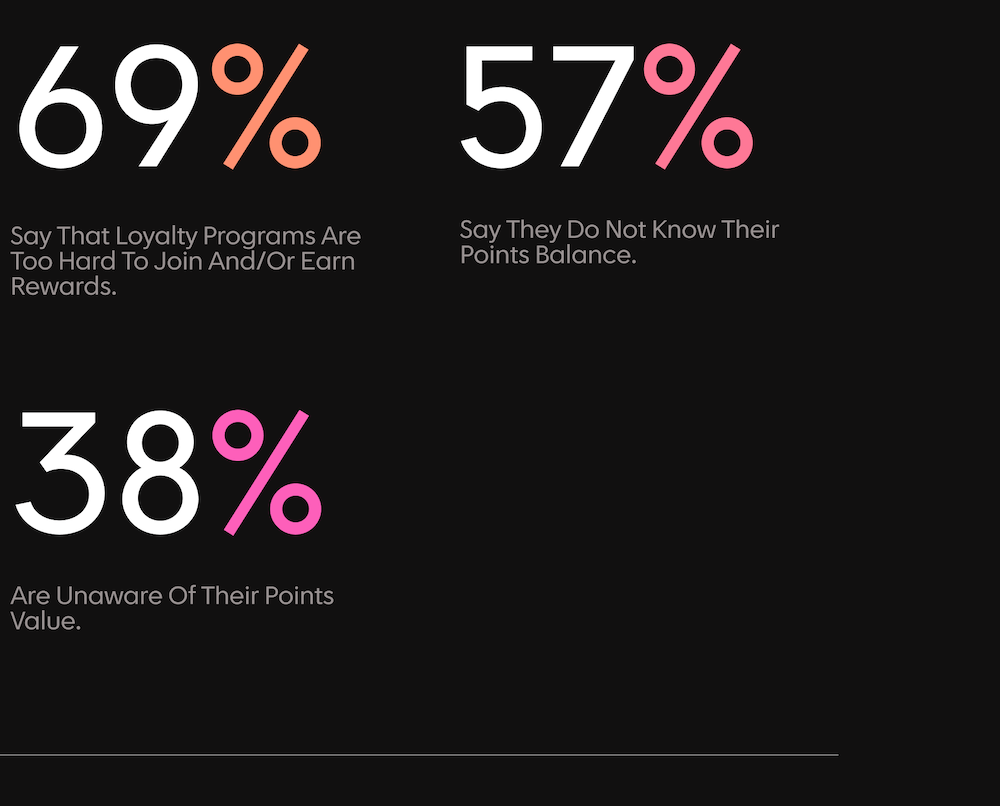Loyalty programs pitfalls: how companies fail to meet customer expectations
Problems with today's loyalty platforms

While most brands have a loyalty program strategy in place, many miss the mark when it comes to meeting customer expectations. The average consumer belongs to 14.8 loyalty programs but are active in less than half of those. This lack of engagement can be attributed to a few common obstacles.
Traditionally, companies create static, linear, one-size-fits-all loyalty programs that fail to engage with the customer over time, which in turn fail to provide long-term value. Typical examples include airline miles per mile traveled, gas discounts per gallon purchased, or apparel points earned per dollar spent. The lack of engagement is likely due to a lack of personalization that encourages more adoption.
Loyalty programs frustrate customers with their lack of transparency and fluctuating values. For instance, economists at Purdue and Chicago Booth discovered that as redemption expirations drew near, gas stations hiked up the price per gallon, believing that the customers’ long-term value had been secured: “The gasoline chains would lower prices at the beginning of the programs to attract participants and then crank up prices once consumers were invested.” Practices like these only harm consumers and overall business value.
A better solution would be to supplement those programs with dynamic, personalized offers based on the unique characteristics of your customers. In addition to tiering offers based on a linear metric like dollars spent or miles traveled, businesses could create offers based on activities that the customer enjoys, creating a positive feedback loop that increases engagement and lifetime value.
Connecting the brand to consumers isn’t the only challenge facing today’s loyalty programs. Sometimes the connection between consumers is even more important. Consumers are drawn to brands that go beyond transactional relationships to foster a sense of community and belonging. Brands should provide a platform for users to share experiences, learn from one another, and network with like-minded individuals.
Consumers frequently complain that loyalty programs are overly complex and require complicated onboarding processes and convoluted point systems.


Today’s brands must overcome these obstacles to offer next-level loyalty programs that are personalized, easy to use, and offer transparency and meaningful opportunities to connect. Forward-thinking brands are turning to the latest advancements in technology to help deliver these services to consumers in ways we could have only dreamed of a decade ago.
Keep reading to learn how blockchain and web3 can vastly improve the loyalty program experience.

